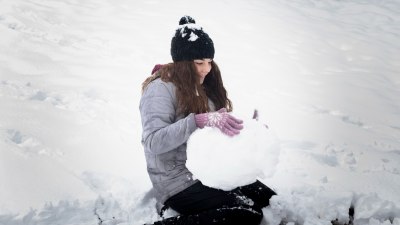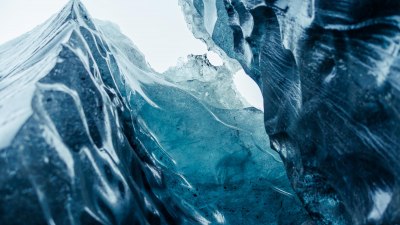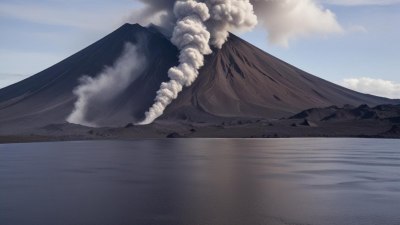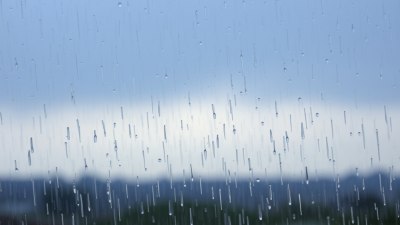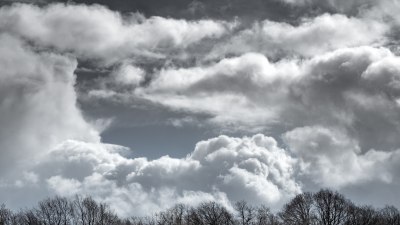Why the Sound of Ice Cubes Is Louder When It's 90 Degrees
Explore why ice cubes make louder sounds at 90 degrees, explained through physics, temperature effects, and melting dynamics.

Image created with Flux Schnell
Have you ever noticed that the sound of ice cubes clinking in a glass seems louder on a hot day, especially when it's around 90 degrees? This curious observation blends everyday experience with fundamental principles of physics and environmental science. Understanding why ice cubes produce louder sounds under these conditions involves exploring the interaction between temperature, water properties, and sound transmission.
The Science Behind Ice Cube Sounds
When ice cubes move within a container, they collide with each other and the surface of the glass. These collisions create vibrations that propagate through the air as sound waves. The volume and pitch of these sounds depend on several factors such as the temperature of the ice and water, the physical properties of the glass or container, and the surrounding environment.
Role of Temperature in Sound Production
Temperature affects both the ice cubes themselves and the water they sit in. At 90 degrees Fahrenheit, which is quite warm, the water around the ice is warmer, leading to a more rapid melting of the ice surface. This melting changes the texture and shape of the ice cubes, influencing how they collide and produce sound.
Melting and Surface Texture of Ice
Ice cubes exposed to higher temperatures develop thin layers of meltwater on their surfaces. This water acts like a thin lubrication film but also creates small irregularities and wetness that modify the impact force during collisions. Instead of a soft dampened sound, these lubricated surfaces can cause sharper, more resonant clicks and clinks because the thin water layers enable the ice cubes to slide slightly yet pop when hitting each other.
Effect of Air Temperature and Humidity
Warm air at 90 degrees typically holds more moisture. Increased humidity affects the speed at which sound travels and can influence sound amplification around the container. Moist air can help transmit sound waves more effectively, making the ice cube collisions seem louder to our ears.
Acoustic Properties of the Environment
The surrounding environment's acoustics also play a role. On warmer days, people often use different drinking vessels, move to shaded areas, or experience varied airflow, all of which affect how sound propagates. For example, sitting outside on a hot day might enhance the resonance of the ice clinks due to ambient environmental factors.
Material of the Glass and Sound Amplification
The glass or container holding the ice acts as a resonator. Warm temperatures can slightly affect the glass's physical properties, though minimally, they could influence how vibrations from the ice cubes are transmitted and amplified. Additionally, the warmer water level inside the glass changes the mass and damping characteristics of the system, thereby affecting the resulting sound.
Thermal Expansion and Sound Transmission
Materials expand slightly when heated. Both the glass and the water inside it expand at 90 degrees compared to cooler temperatures. This expansion can subtly alter the interaction between ice cubes and their container, affecting how the impact forces generate sound vibrations. Even minute changes can lead to appreciable differences in perceived sound level.
Freezing Point Depression and Its Impacts
At higher temperatures, contaminants or dissolved substances in the water cause freezing point depression, altering how the ice melts. A slower or uneven melt creates surfaces on the ice cubes that encourage louder collision noises. Variations in crystal structure due to imperfect freezing can also contribute to how ice cubes resonate under warmer conditions.
Surface Tension and Water Layer Dynamics
The tiny water films forming on ice at 90 degrees have surface tension effects. These thin films can cause a 'stick-slip' effect where ice cubes momentarily stick and then slip over each other when moved or stirred, producing sharp, distinct sounds. This effect is more pronounced at warmer temperatures where the meltwater layers are sufficiently stable yet thin.
Speed of Sound and Temperature Correlation
As air temperature increases, the speed of sound increases as well. At 90 degrees Fahrenheit, sound waves travel faster through air, allowing the clinking sounds of ice cubes to reach our ears more quickly and seemingly with more intensity. This increased speed results in a crisper, clearer sound.
The Physics of Cold vs. Warm Ice Collisions
Colder ice cubes tend to be harder and less prone to chipping or deforming on impact, producing duller sounds as vibrations are absorbed more by the solid ice mass. In contrast, ice cubes slightly softened by heat may chip or flex more on impact, generating sharper, louder noises. The balance between hardness and surface melt governs the character of the ice cube sounds.
Psychological Perception and Ambient Noise
Perception of sound loudness can be influenced by ambient conditions and psychological factors. On hot days, quieter outdoor environments or the contrast with other noises can make ice cube clinks more noticeable. The heat may also make listeners more sensitive to cooling sounds, enhancing the perception of loudness.
Scientific Studies and Experiments
Researchers have conducted experiments measuring the acoustics of ice cube collisions at various temperatures. Studies confirm that ice cubes produce louder and sharper sounds at higher ambient temperatures due mainly to increased melting, the presence of meltwater layers, and faster sound propagation through warm air. These findings support anecdotal observations with empirical data.
Practical Implications and Uses
Understanding this phenomenon has implications in fields like acoustic engineering, beverage industry beverage presentation, and environmental science. For example, bartenders may adjust ice and glassware choices to enhance auditory appeal. Acoustic sensors could consider temperature effects when monitoring environments where ice interactions produce noise.
The louder sound of ice cubes at 90 degrees is a complex interplay of physical and environmental factors. Melting ice surface films, increased air humidity and temperature, the acoustic properties of the surrounding environment, and material expansion all contribute to sharper, louder collision sounds. This everyday occurrence highlights fascinating thermodynamic and acoustic principles observable in our daily lives.



